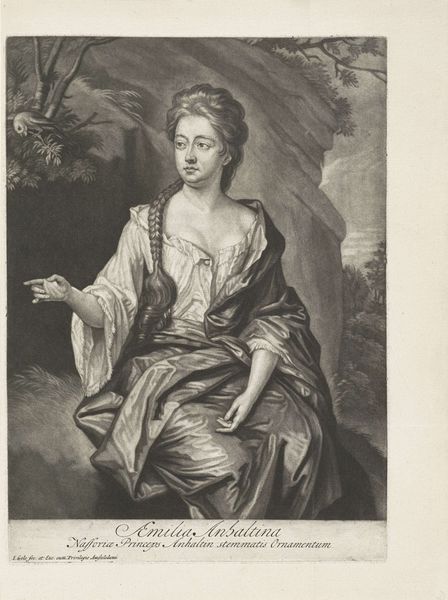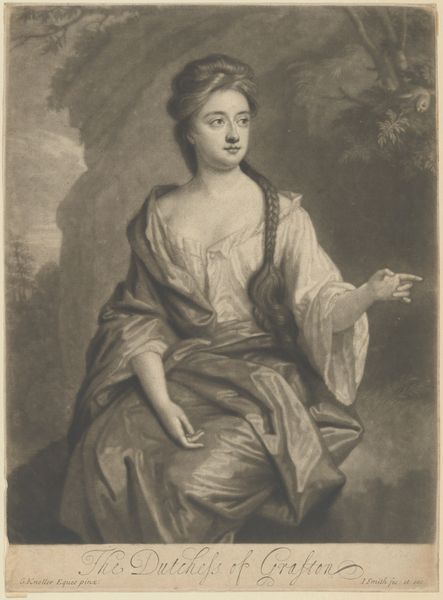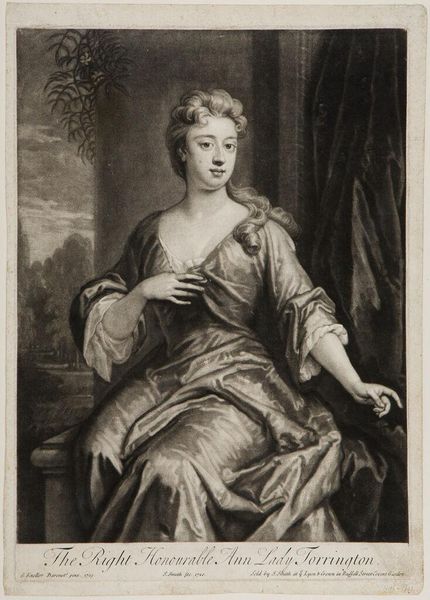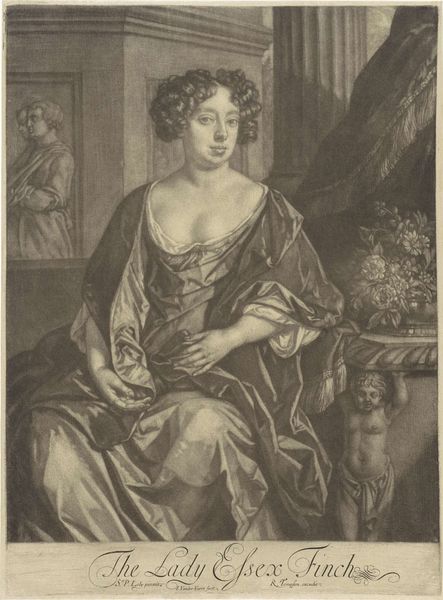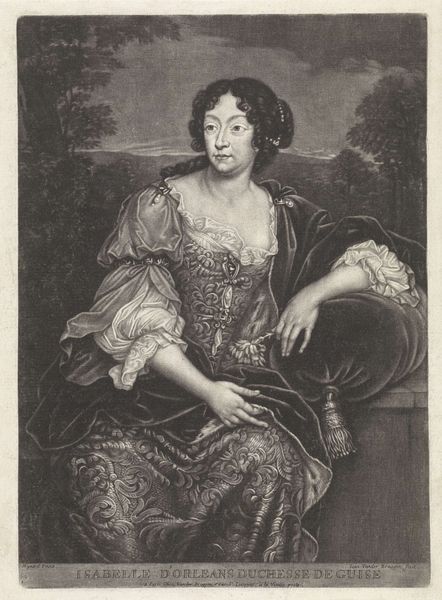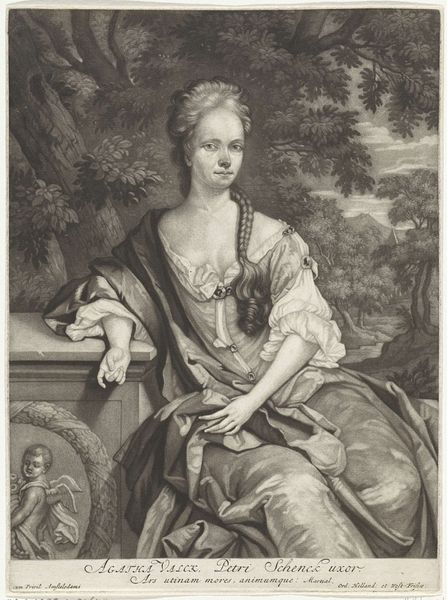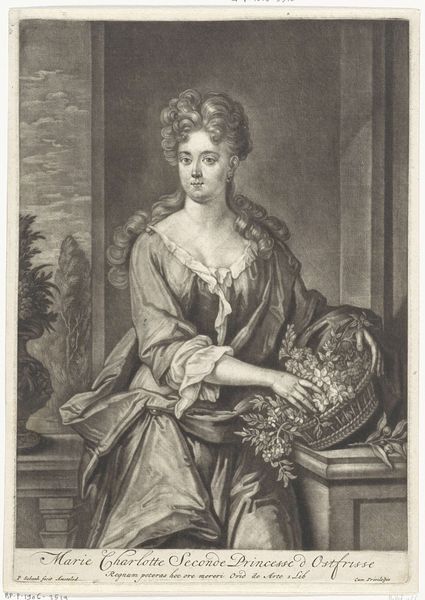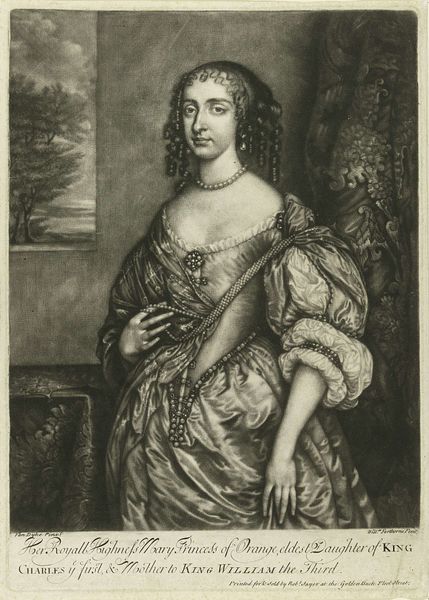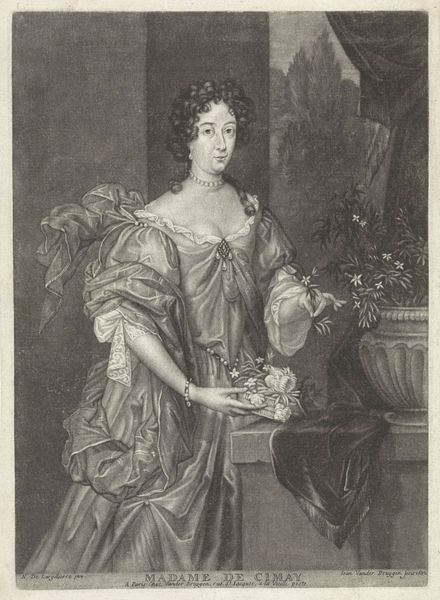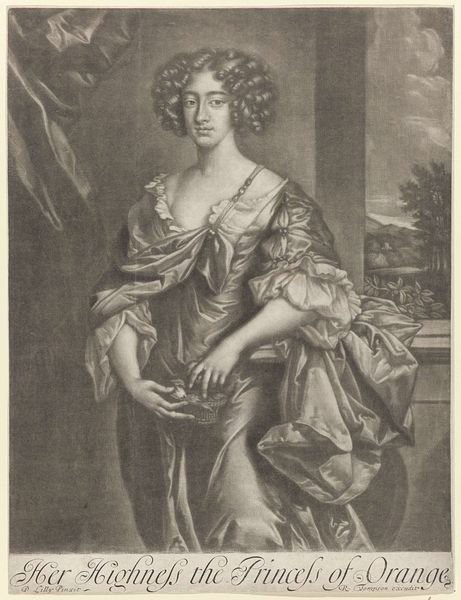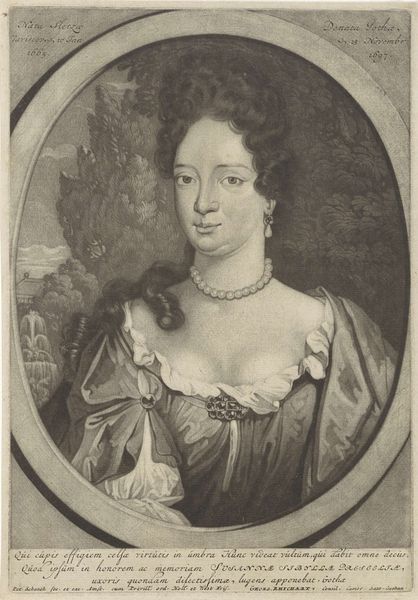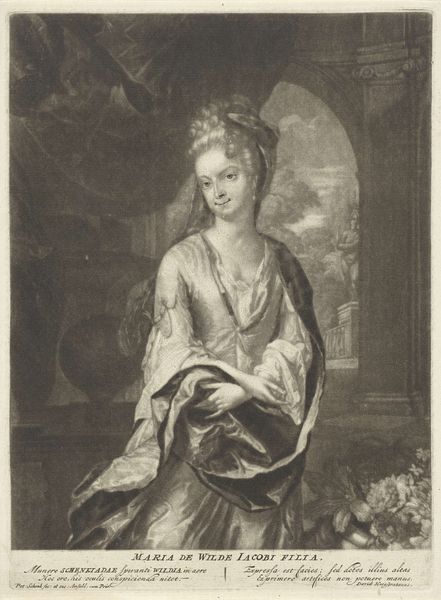
print, engraving
#
portrait
#
baroque
# print
#
northern-renaissance
#
engraving
Dimensions: height 245 mm, width 177 mm
Copyright: Rijks Museum: Open Domain
Editor: This is "Portret van Cecilia Schenk," a print by Pieter Schenk, created sometime between 1690 and 1713. The engraving feels incredibly staged to me. The subject is posed against this theatrical backdrop, holding flowers and pointing... somewhere. What do you see in this piece? Curator: I see a careful construction of identity, typical of portraiture of the time, but here complicated by the subject’s active gaze and gesture. While seemingly decorative, Schenk's engraving can be read as a commentary on the societal expectations placed on women and how they negotiated their own self-representation within those constraints. Look at how Cecilia Schenk, through her dress and gaze, is actively engaging with the viewer, right? Editor: Yes, but what do you mean "negotiating"? It's just a portrait. Curator: Well, consider the performative aspects of portraiture, particularly for women of this era. They were often depicted as symbols of virtue or beauty, fulfilling prescribed roles. However, here, Cecilia’s direct gaze and pointing gesture challenge passive representation. Does this imagery evoke any feelings of women in similar modern roles for you? Editor: Now that you mention it, it feels a little like women trying to forge paths in male-dominated spaces today. They present themselves in a certain way but are constantly pushing against expectations. The pointing, the way she occupies the frame—it seems active now, less decorative. Curator: Exactly. Schenk gives us more than a passive likeness; he captures a moment of self-assertion. Understanding how images operate within a system of power dynamics helps us read them in ways beyond initial impressions. Considering feminist theory can enrich our reading of Schenk's piece. Editor: That’s so helpful! I hadn't thought about the ways images of women throughout history can show us how women have been navigating their own identities. I see it differently now.
Comments
No comments
Be the first to comment and join the conversation on the ultimate creative platform.
